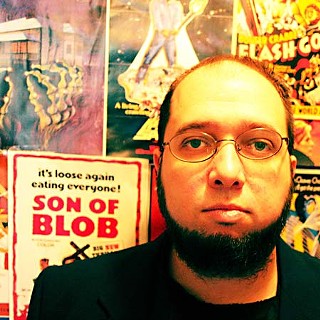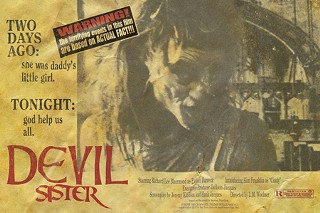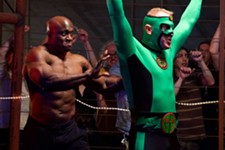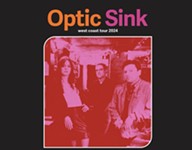Shock and Awesomeness
Stephen Romano and the wild, weird, and totally phony grind-house world of 'Shock Festival'
By Marc Savlov, Fri., Oct. 24, 2008
The dream is always the same. It's summer, 1984-ish, and I'm slung low in a stifling, faux-velvet fleapit theatre chair the color of a freshly struck Profondo Rosso print. It's dark in there, and the floor is tacky with what might be spilled Coca-Cola but is almost certainly something much, much worse. But it's cool because I'm wearing my Chucks. I'm always wearing my Chucks as the projector's beam in this grind house of my mind splashes a never-ending wash of gloriously eclectic 42nd Street cinematic deviancy onto a shabby, stained screen. The chain-beating sequence from Devil Times Five slo-mos into Buñuel's ants in the hand, which in turn morphs into a Road Runner cartoon that looks more like Ralph Bakshi's Fritz the Cat by way of Lucio Fuci: A mean-looking Acme anvil is awash in coyote innards.
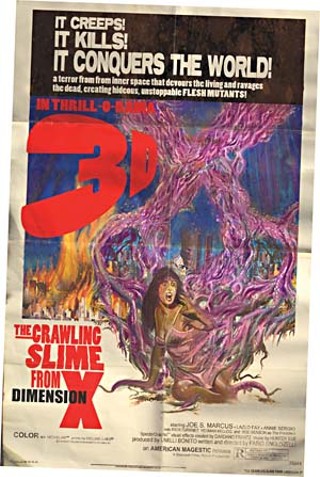
And then there's the endless trailers for films no one outside my head has seen. Films with titles and taglines like Evolver ("For God's sake, what the hell is it?"), Twisted Kisser ("This man has just killed his wife for the second time ... will the third time be the charm?"), That Fuckin' Cat! ("She's the stinkiest, dirtiest, most foul-mouthed little pussy in town"), The Naughty Librarian ("She's got the last word in total pleasure"), and Cannibal Callgirls ("They are young. They are sexy. They are insane. They are going to eat you.").
Freaky, right? Like I said, no one outside my fevered film-geek prefrontal lobe has ever bought this particular bargain matinee ticket to Terrorsville.
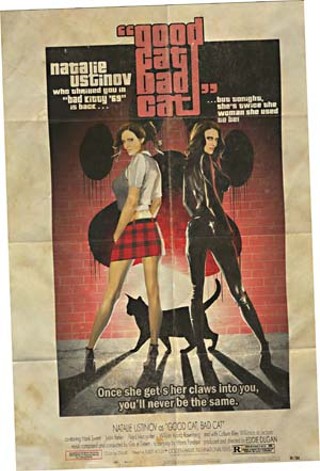
No one, that is, except Austin author, artist, and screenwriter Stephen Romano, who – in my dream – waves at me from the projectionist's booth, grinning like a goddamn lunatic in the seconds before the living dead pull him down and out of frame, and I wake up screaming, out of the reel and into the real.
Welcome to Shock Festival: One Hundred and One of the Strangest, Sleaziest, Most Outrageous Movies You've Never Seen.
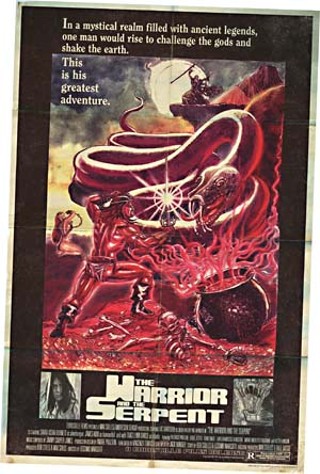
Thanks to Rudy Giuliani, the grind houses and peep shows that once made New York City's squalid 42nd Street theatre district a hotbed of seedy, slimy, cinema-veritastic charm – "the Deuce" – are now a distant memory. Today's Times Square is more suited to shiny, happy people who dig Disney and tend to avoid movies with titles like Cannibal Holocaust. More's the pity.
Sure, you can Netflix the sleaze by mail or troll your local indie vid outlet, but where's the fun in that? The exploitation films of the Seventies and early to mid-Eighties were made to be screened in cruddy little screw holes with bad bulbs and worse clientele or, alternately, beneath the stars, from the back seat, during drive-in coitus, as nature intended.
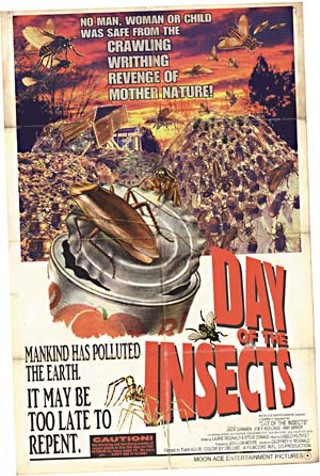
Romano, a fan like no other, has created a solution that's equal parts homage to movies such as The Undertaker and His Pals and a surrealistic masterpiece of alternate-universe journalism that's so detailed and so full of heart (good, bad, black, or bleeding – take your pick) that you may think it's real. But it's not. It's a book. A big book, 350-plus pages of sideswiped faux-cinema history, that tells the sordid story of a forgotten group of fringe-dwelling filmmakers – "forgotten" chiefly because they're totally fictional – whose unrepentant bad taste and surprising genius are comparable to and indeed based on such real-world mavericks as American International Pictures' Roger Corman, Samuel Z. Arkoff, and James H. Nicholson; Full Moon Pictures' Charles Band; and Italy's Luigi Cozzi.
It's like the Deuce reborn, but in print. You can almost sniff the odor of melting celluloid jammed in the gate, feel the tang of artistic despair in the air. Shock Festival is redolent in the extreme, visually stunning, and one hell of a ride, two years in the making, 30 in the conceptualizing.
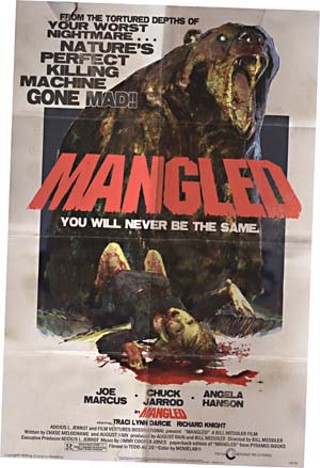
"I've had the idea since I was about 13 years old," Romano says, handing me a dog-eared, much-thumbed pad of pencil-drawn mock-ups of horror and sci-fi one-sheets, neatly tagged with cast, crew, and distributor info, the kidhood doodles that evolved, 30 years later, into Shock Festival. "Mangled, directed by Tom Savini, music by Wendy Carlos," reads one.
"Yeah, you can see where my head was at at the time, right? I actually ended up using a few of these titles in the final book. This is the kind of stuff I would do instead of homework."
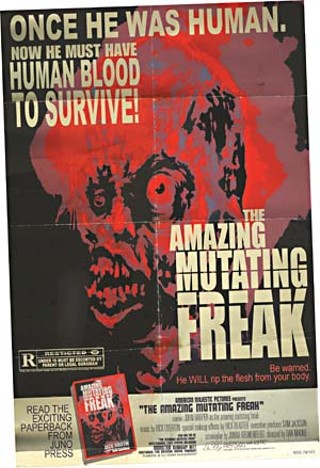
2005 saw Romano's screenwriting career take off big time when his adaptation of Joe R. Lansdale's short story "Incident on and off a Mountain Road" was helmed by longtime pal and Phantasm filmmaker Don Coscarelli for Showtime's Masters of Horror series. In the wake of that career milestone, Romano began casting about for a new project and came back to the germ of the idea that would eventually become Shock Festival, "but my skill set as an artist hadn't evolved far enough by then, so I just kind of thought about it and then put it away for a while. I knew I could design the stuff, but I didn't yet know how to do the art."
Romano decided instead to write us The Riot Act (a vicious little original story collection) and crank out a novel, Just Like the Animals – "which was really dark and personal and horrifying and done in 20 days," recalls the author. "I remember sitting there and thinking, 'Man, I've got to do something a little more fun.' I've gotten a little bit famous for writing this dark, extremely personal fiction, but it takes a lot out of you. And so I just started doing Shock Festival back in February of last year."
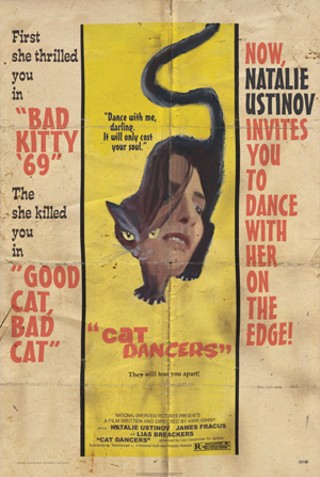
Which sounds like a "Hey, how hard could it be?" situation until you actually see the finished book, which practically demands that you buy a bigger coffee table (with skulls on it, preferably). It's not just an overgrown love letter to the type of films your mother warned you about; it's also an incredibly well-researched (read: imagined) work of alternate-universe film history. Like Peter Jackson's unreal documentary, Forgotten Silver, Romano's tome so thoroughly envisions a slice of B-movie genre history that it often seems more honest than the truth. But let's allow Romano to explain his m.o. He is, after all, the one with the blood on his hands, so to speak.
"Initially I figured I could get a few artists together who would work for little or no money and then do the rest of the art myself. And so, as the project evolved over the next few months, [I] taught myself how to create this artwork and make it look as though it actually existed. I took reference photos of my friends, with guns, and I put them in Photoshop and learned how to use the color templates to actually make real paintings out of them. I studied the techniques of certain artists I had hired to see how they did it; I asked them for advice, and they told me how they did it. And I had an amazing roster of artists, too, people like Tim Bradstreet [Marvel's The Punisher, Raw Studios' Bad Planet]; Michael Broom, who was an effects designer for The Mist; and David Hartman, who is an Emmy-nominated animation director. Ultimately, there were a lot of people who were involved in the creation of the book, but I did the bulk of the work myself.
"Over the course of a year, I became just about as good as any artist I might have hired to do this stuff. So good, in fact, that I'm now making a respectable living in my side career as a movie-poster artist. Which is just bizarre."
Legendary comic artist Bradstreet (see "The Art of Schlock" at austinchronicle.com/webextra) eventually came on board as the book's art director, bringing with him actor Thomas Jane (The Punisher, The Mist), with whom he co-founded the comic and graphic-novel publishing house Raw Studios. Bradstreet and Romano worked out much of the book's visual vibe via late-night, e-mail jam sessions, with one bouncing ideas off of the other, each artist bringing his own specific sensibility to whatever one-sheet, storyline, or mock-history they were working on and coming up with something that was entirely new, entirely believable to the untrained eye, but altogether unreal.
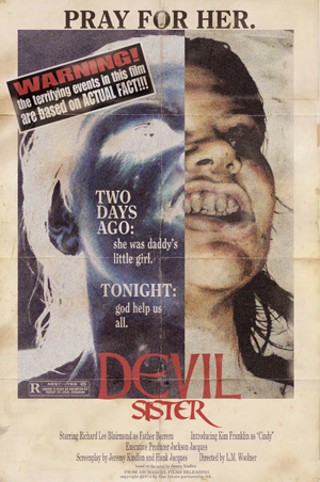
And that's one of the great shocks of Shock Festival: The fakery involved has been so lovingly assembled from the bits and pieces of real-world cinematic detritus that it all comes off as 100% real. It's not hard to imagine fans of obscure exploitation cinema scouring the Internet for any other record of literally made-up movies like Little Sister's Faceless Nightmare (or its French variant, Le cauchemar de ma soeur sans visage). The non-English-speaking Japanese scene is going to go absolutely bug-fuck looking for this stuff.
So. Six months back, Romano pillages his bank account and prints up 25 full-color, hardcover "demo" versions of Shock Festival to send off to press (including Fangoria, Dread Central, and The Austin Chronicle) and potential publishers (IDW, of 30 Days of Night fame; Raw Studios) and ends up, almost overnight, striking pay dirt with IDW and getting a co-brand with Raw Studios, whose CEO, the aforementioned Jane, even agrees to "play" the character of a deranged director named Swann.
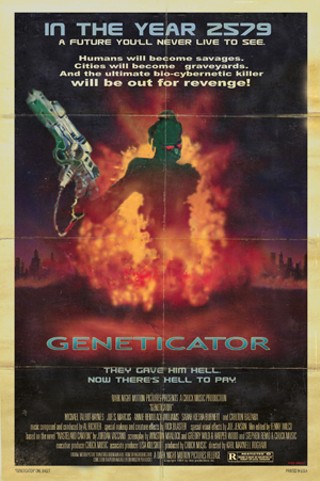
"Tim got back to me and gave me a ton of advice on how to turn it from a demo book into a real book – slicker, slimmer, sexier – and that's when I really kicked into high gear. Actually, I was coming up with wild new ideas up until the very day that I submitted it to the actual printers. I was my own creative editor, with complete artistic freedom, and that's why I finally went with IDW as the publisher, because they left me totally alone. And so, just like any movie, I was creating art and text and dialogue up until the very last minute, literally. In that way, the creation of this crazy book about the movies was actually a lot like making a movie itself."
Indeed. Over the course of the past year and a half, Romano called in virtually all of his Austin friends and associates to portray the various characters that would make up Shock Festival's exploitation universe. Keen-eyed observers of the Austin film and music community will see everyone from go-go babes the Satan's Cheerleaders to punk purists the Applicators in supporting roles, as well as a who's who of local genre enthusiasts who heeded Romano's clarion call for "fresh meat." (Full disclosure: My lousy mug appears in a single photo as Italian film producer Umilli Bonito. Go figure.) Enter the grinder.
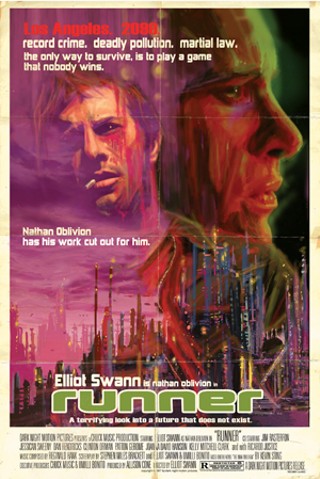
"It's God's own toss-up as to who is going to live or die in this book," says the author of his fictional Romano-verse, "because, just like in the real world, not everybody survived the Seventies."
Too true. The character of Joe Marcus, a hard-drinking Vic Morrow-type who finds his career in tatters at the end of the Sixties is a composite of Morrow (who never made it out of The Twilight Zone, thanks to John Landis), doomed party monster John Belushi, and Joe Spinell, the legendary NYC character actor and screenwriter of the relentlessly misogynistic and gut-churning grind-house apex and/or nadir Maniac, who, like his fictional counterpart, was a hemophiliac in more ways than one.
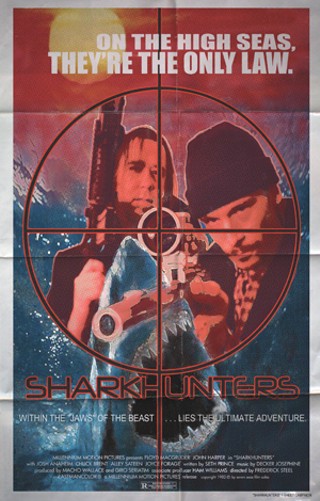
"The main character in Shock Festival," explains the author, "is Roc Benson. He represents all of the washed-up character actors who had tiny little parts in cop-show thrillers and monster movies in the Sixties and who resurface in exploitation fare in the Seventies.
"Like them, he later gets a whole new career from a director named Fabio Englozelli – based on Starcrash director Luigi Cozzi – and ends up doing all these exploitation films. And then from there he becomes this mogul who makes his own way and ends up producing all of these great movies.
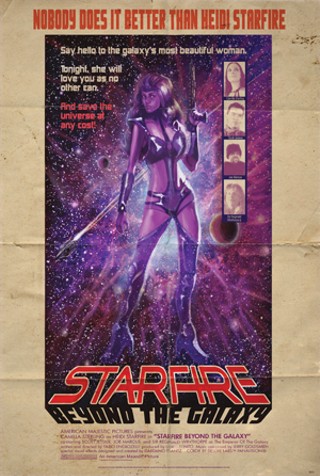
"One of the main through lines in the book is this big, fat white guy who ends up joining up with the Black Panther Party as sort of their honky-on-the-inside, so to speak, and then goes and makes a Panther-approved movie called N.I.G.G.E.R., which, before you yell at me, is an acronym for Nuclear Implanted Gyro Genetically Engineered Robot – [the intention being that] in the context of the book, Benson and the Panther's idea was that this would be a sort of reverse-racism which would make people think about this movie instead of an ugly slur about black people. It's the kind of thing that could only be dreamed up by a bunch of drug-addled revolutionaries doing crank all night and bouncing insane ideas off of each other. And the movie becomes his downfall. It's a hilarious chapter."
Hilarious, crude, incisive, exploitative – Roc Benson's Hollywood hell ride has got it all, and he's complemented by a revolving door of other, often less charitably drawn characters that render Shock Festival something approaching Hollywood Babylon by way of Sleazoid Express. It's "psychotronic" in all the best ways, and it even ends with a bang, not a whimper, unlike so many of its real-world counterparts. Like, say, Starcrash.
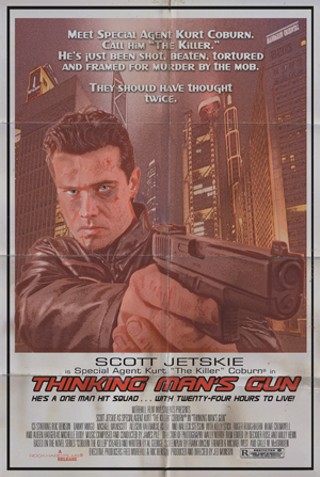
"The thing that I love most about exploitation films," says Romano, "whether they're science fiction, horror, fantasy, or whatever, is the promotional artwork and that whole mystique that surrounds them. Frequently the movie sucks, but some of them are pretty great. Take Luigi Cozzi's Starcrash, for example. It's like the Maserati of exploitation films. It's got tons of great bells and whistles all over it, but the special effects are so terrible and the acting – David Hasselhoff, Marjoe Gortner, and former Bond girl Caroline Munro [The Spy Who Loved Me] are in it – is so atrocious that it becomes this whole other thing [that] achieves a kind of transcendent genius. It's actually one of the few exploitation films where the poster isn't nearly as cool as the movie."
Romano continues: "Obviously someone who isn't interested in this type of film isn't going to be the biggest audience for this book. But I'm hoping that people will plug into the fact that, at the end of the day, I'm telling a story about the people who made these films and not just fucking around with Photoshop and my friends. This is a reel story; it's just not, you know, real. When you watch an exploitation movie, especially one that's a little lesser-known, like [Robert F. Slatzer's] The Hellcats or [Lee Frost's] Chain Gang Women, you don't really click to the fact that they were made by living, breathing people. You kind of get the impression that they just kind of happened and arrived in front of you in the video store fully formed. Which, when you think about it, is how we used to feel as kids. Back then, movies were just these wondrous things that were invented and just appeared out of nowhere. But as we got older, we realized that people like John Carpenter made them."
And then we either go make them ourselves or make them up, as in Shock Festival. The line between the grind house and the daily grind continues to blur (note the box-office failure/DVD success of Quentin Tarantino and Robert Rodriguez's Grindhouse), turning Romano's pseudo-journalistic accomplishment into a genuine revelation, an event that's rarely if ever been done before outside of the long-gone, sorely missed Deuce: the merging of fact and fiction into something too outrageous to be the truth and too disarmingly ghastly/gorgeous to be anything but.
Here's blood in your popcorn.
Stephen Romano will be signing copies of Shock Festival this Saturday, Oct. 25, 7pm at Austin Books & Comics (5002 N. Lamar). For more information, visit www.shockfestival.net.





